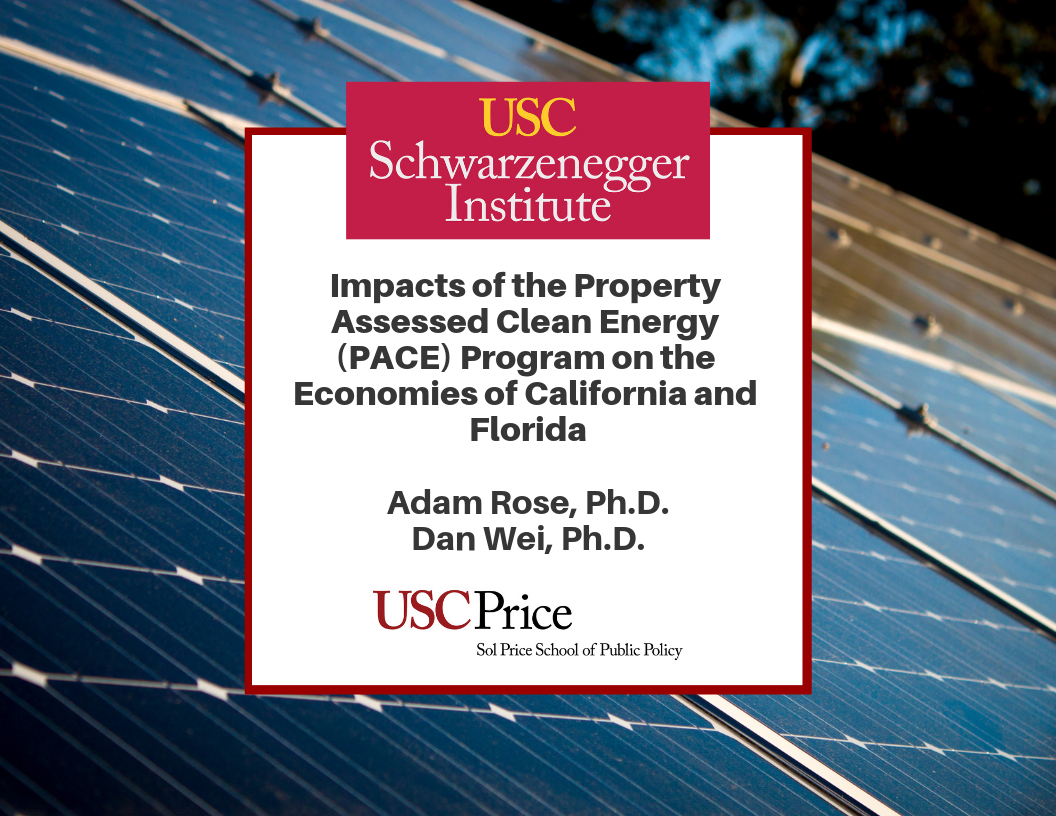Impacts of the Property Assessed Clean Energy (PACE) Program on the Economies of California and Florida
Adam Rose, Ph.D. and Dan Wei, Ph.D assess the impacts of the Property Assessed Clean Energy (PACE) Program on the economies of California and Florida. Property Assessed Clean Energy is a way to finance a wide range of energy and water efficiency, renewable energy, and hazard mitigation improvements permanently attached to residential and commercial properties.
- PAPER – this study performs a regional economic impact analysis of PACE financing by one of the leading firms in the market—Ygrene Energy Fund, Inc. Since 2013, and through the end of July 2018, Ygrene has provided more than $1.16 billion to finance over 54,500 property improvement projects in over 500 cities and counties in California, Florida, and Missouri (Ygrene, 2018).
Areas of Assessment for “Impacts of the Property Assessed Clean Energy (PACE) Program on the Economies of California and Florida”
- Contributions of PACE Financing
- Economic Analysis of PACE Impacts
- Direct Energy and Environmental Impacts
- Benefit-Cost Ratios for Earthquake and Hurricane Improvements
- Energy and Environmental Improvements
- Greenhouse Gas Emission Savings
- Avoided Disaster Losses
- Insurance Premium Savings
- REMI Model Simulation of Indirect Economic Impacts
- Linkages between Direct Costs/Savings of the PACE Projects and REMI Inputs
- Impacts of California Ygrene PACE Financing
- Impacts of Florida Ygrene PACE Financing
- Tax Impacts
- Summary of Base Case Regional Macroeconomic Impact Results
- Displacement Effects of Repaying PACE Financing
- Offsetting Effects of Energy Demand Reduction
- Additivity of Ygrene Financing


